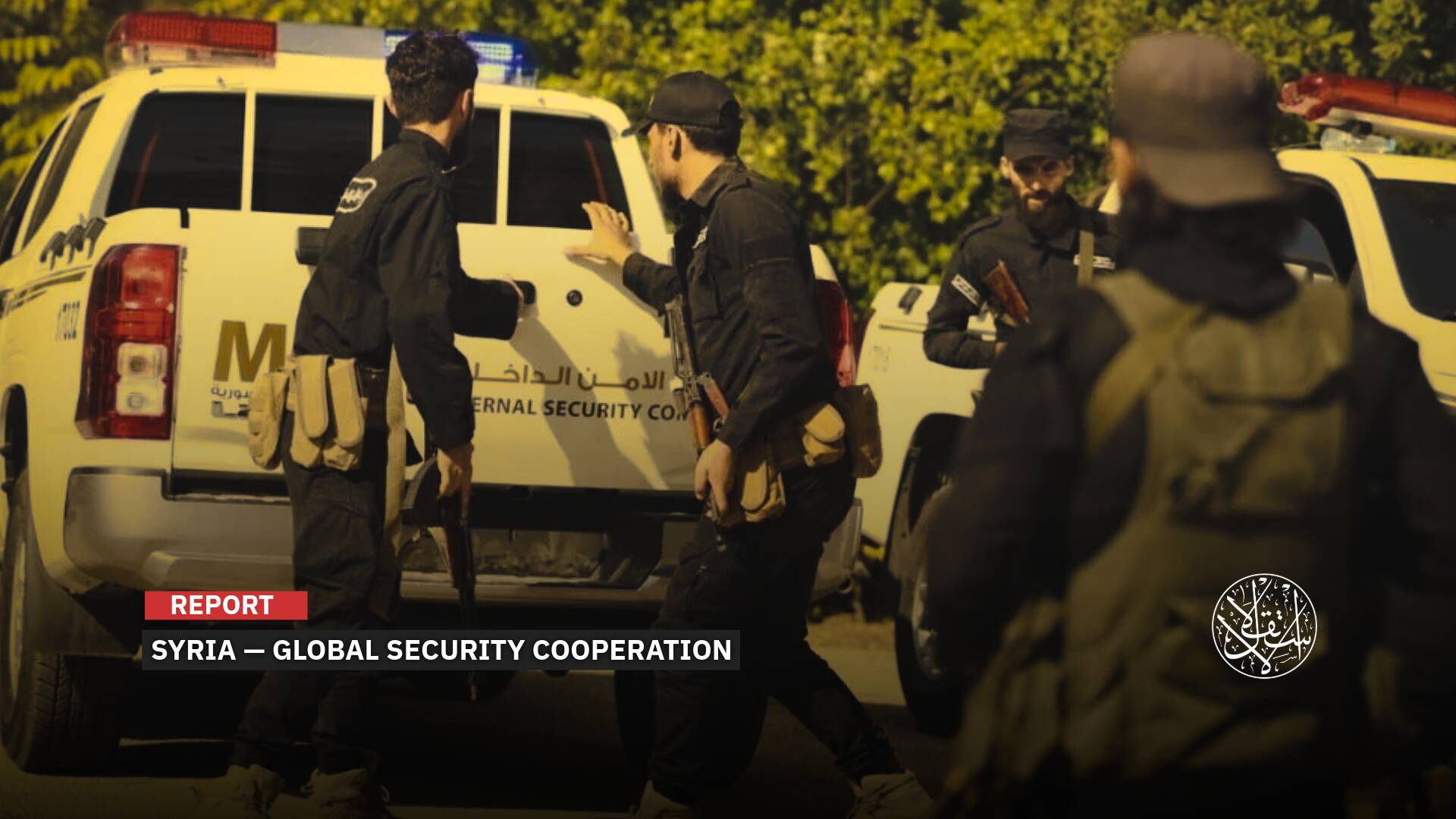The Largest Real Estate Theft: How the Assad Regime Stripped Refugees of Their Property

At a time when Arab countries and governments are rushing to normalize relations with the Assad regime under the pretext of securing the return of Syrian refugees to their regions, villages, and towns, an investigation reveals how security networks linked to the regime forge documents for houses and apartments in order to seize them officially from their owners, who often live outside the country.
According to the investigation, the use of forged documents and the exploitation of the courts of the Assad regime were among the most prominent methods used by corrupt networks supported by the security branches and the Assad forces to benefit from the chaos of war.
What has accelerated thefts in Syria is its deteriorating economy and the lure of low-income people with bribes.
The operations of forgery and seizure of property also included most of the areas under the control of the Assad regime, especially the areas of those who were forcibly displaced, in addition to focusing on the property belonging to the opponents of the regime.
This coincides with the continuation of the Assad regime issuing controversial laws related to property, such as Law No. 10, which allows the establishment of areas for urban development in areas that witnessed the displacement of the indigenous population, such as the areas of Qaboun and the eastern Ghouta of Damascus and others.
In addition to Law No. 3 to remove the rubble of destroyed homes, which carries with it waves of property rights violations directed against refugees who are unable to prove their ownership, according to human rights organizations.
Syria suffered from one of the largest displacement and refugee crises in the world, as more than 13 million Syrians were forced to either flee the country or were internally displaced as a result of the war which began in 2011, according to the UNHCR.
The Largest Real Estate Theft
An investigation prepared by The Guardian newspaper in cooperation with The Day After Organization and the Syrian Unit for Investigative Journalism Siraj stated that Syria is witnessing the largest real estate theft in its history, carried out by security and military networks affiliated with the Assad regime, of the homes and properties of the displaced and refugees outside the country.
The report, which was published on April 24, 2023, indicated that the process of seizing refugee homes constitutes a major obstacle to the return of refugees to their homes.
The forgers benefit from the absence of the real property owners, and from the lengthy litigation periods in the event that cases of forgery reach the courts, and from the networks’ experience in forgery and their cooperation with lawyers, notaries, employees, and owners of real estate offices.
The investigation accused security officials or those with security links or officers and military personnel, including members of the 4th Division forces led by Maher al-Assad, the brother of the head of the Syrian regime, Bashar al-Assad.
The Ministry of Justice in the Assad government has recognized the fact that forgery of real estate ownership has turned into a phenomenon and has called on notaries to scrutinize more of the powers of attorney that come to them.
The investigation touched on the statements of the head of the Bar Association branch in Damascus, Muhammad Osama Burhan, in August 2022, about the arrest of a number of lawyers who had forged agencies to sell real estate, in addition to forging legal agencies, especially for people residing outside the country.
The investigation also published the statements of the former head of the Syrian Bar Association, Nizar al-Sakif, about the fate of lawyers who carry out forgery operations, as it revealed that the number of lawyers decreased from 28,000 to 25,000 as a result of the dismissal of a large number of them due to behavior that is not appropriate for the profession of lawyers, including forgery.
It pointed out that there are many factors that contributed to the spread of property theft through counterfeiting networks supported by the Assad regime.
Either because the owners are ignorant of what is happening to their property because they are outside the country, or because they cannot hire a defense lawyer because this requires security approval, and this will not be achieved for the opponents of the Syrian regime, in addition to the widening scope of corruption and nepotism, especially in light of the deteriorating economic situation.
It referred to 5 Syrian families residing in Turkiye, Lebanon, Sweden, and France who could not recover their properties stolen by forgery because they are opponents of the Assad regime and cannot go to Syria, just as no lawyer dared to defend them for fear of arrest or imprisonment.

Corrupt Networks
In the same context, the investigation stated that a large group of Syrian families filed cases related to the loss of their homes and real estate over a period of 12 years in the capital, Damascus, and its countryside, after it was discovered that the ownership of their homes had been transferred in the real estate records to other individuals, in the capital, Damascus, and its countryside.
The investigation quoted a Syrian lawyer as saying, “The rate of forgery of property has escalated in the past two years, as more than 125 people filed lawsuits in the Justice Palace in Damascus and its countryside during the first half of 2022 after discovering that the property of their homes had been forged while they were outside the country. This is a dangerous indication of the growing influence of counterfeiters and those behind them.”
The investigation also mentioned many testimonies of Syrians whose homes were confiscated due to their asylum outside the country and their inability to recover their homes through the judiciary.
In this, Abdullah, one of the victims of forgery who sought refuge outside the country and whose house was burgled, says that his house was stolen from him by one of his relatives associated with the al-Ghaith Forces militia of the 4th Division.
The victim explains, “My relative filed a lawsuit in Qatana Court in the countryside of Damascus, and attached a forged sale contract with it, claiming that I sold the house to him in 2013, and received its full price.”
“In the middle of 2019, the judge in charge of my case issued a decision to register the ownership of my house for the plaintiff, given that I did not attend the court session, and based on the testimony of the witnesses whose names were included in the forged sales contract,” he added.
Another person outside the country also talked about the existence of concessions that take place through coercion by officers in the same division.
As for Iman, she says that she returned from Turkiye to Syria in November 2021, to visit her family and to see her house, only to discover that the renter, who works as an employee in the Military Recruitment Division in Damascus, now owns her house, and has proof of ownership in his name after obtaining a forged sales agency in her name and officially certified by the Syrian Consulate in Istanbul, which means that the sale process is final and irreversible.
Abu Hassan (59 years old) lost ownership of the house he bought in the Damascus countryside after he recently discovered that the one who lives in his house is a major in the 4th Division.
He added, “The officer threatened to force the person who sold me the house, and forced him to register my house in his name.”
Joseph Daher, a professor at the European University Institute, believes that the phenomenon of real estate seizure continues because real estate is a major source for the accumulation of wealth for militias and businessmen linked to the Assad regime, who benefit from the absence of many Syrians who have left their homes and are unable to return for political reasons.
In turn, a member of the Syrian Lawyers Association, Abdul Nasser Hoshan, confirmed in a statement to Al-Estiklal that the forgery operations in the areas controlled by the Assad regime are carried out by those with influence and military and security power, pointing out that more than 20 networks have been detected in Hama, Aleppo, Damascus and Latakia, the numbers of each network ranging between 40 and 50 people.
The lawyer linked the forgery operations to networks and individuals supported by the Assad forces, the most important of which is the 4th Division, which is the economic and security arm and the gateway to seizing many economic projects in Syria.
Mr. Hoshan pointed out that the corrupt networks took advantage of the Assad regime’s decrees to disable real estate and civil status records in many cities, such as Hama, Homs, rural Damascus, Aleppo, and Deir ez-Zor, from 2012 to 2020 to seize the property of displaced Syrians and refugees.

Demographic Change
With the beginning of the Syrian revolution in March 2011, the Assad regime enacted and amended many laws and regulations in line with the new situation and due to the expansion of protests in most cities and towns, especially the terrorism law, which has become the charge against demonstrators and opponents.
In April 2011, the Assad government decided to lift the state of emergency and abolish the Supreme State Security Court. In July 2012, it issued Anti-Terrorism Law No. 19.
In the same month, the regime ratified Law No. 22 establishing the Anti-Terrorism Court, granting the Public Prosecutor the right to freeze the property of anyone who commits crimes related to terrorist acts or any crime under this law.
With the expansion of the rebellious areas, the Assad regime used legislation to impose collective punishment on all those who oppose it, as part of a systematic policy that prevents the return of displaced persons and refugees to their homes.
In 2018, the regime issued Law No. 10, which aims to seize the property of millions of Syrians who cannot enter the country, which observers likened to the absentee property law issued by the Israeli occupation in 1950 to seize the properties of the displaced Palestinians.
According to reports, Law No. 10 aims to change Syria demographically, especially since it coincided with the news that spoke of the naturalization of about two million Shiites and their settlement in the areas of the displaced from the Sunni community.
According to Syrian human rights activists, the confiscation of land by the Assad regime under the guise of investment is a violation of Article 15 of the constitution, which prohibits exposure to private property or the confiscation of private property funds, except in one case within the appropriation for the public benefit, with conditions and a final judicial decision, and that there be fair compensation for the injured.
They pointed out that the regime’s disposition of the lands of the displaced and dissidents also violates international law, as it is a seizure in the context of an internal armed conflict, through an authority that lacks legitimacy in the constitutional custom, emphasizing that the process of appropriating property or looting is a war crime that does not fall under the statute of limitations.
It is noteworthy that there are several decrees and decisions issued by the Assad regime in the past, the aim of which was to seize real estate property of displaced persons or opponents of it, including Decree No. 12 of 2016, which is a decree providing for the implementation of an electronic copy of the real estate records that are the fixed ownership of citizens with the aim of legitimizing the theft of property and registering it in the name of new people.

In April 2022, the Association of Detainees and the Missing in Sednaya Prison (ADMSP), a human rights group, revealed that the Assad regime confiscated funds and property belonging to former prisoners and forcibly missing persons estimated at $1.5 billion from 2011 to 2021.
The ADMSP estimated that nearly 40% of detainees after the Syrian revolution in 2011 were subjected to confiscation of their property, as the report was based on an approximate number linked to at least 250 thousand detainees during that period.











